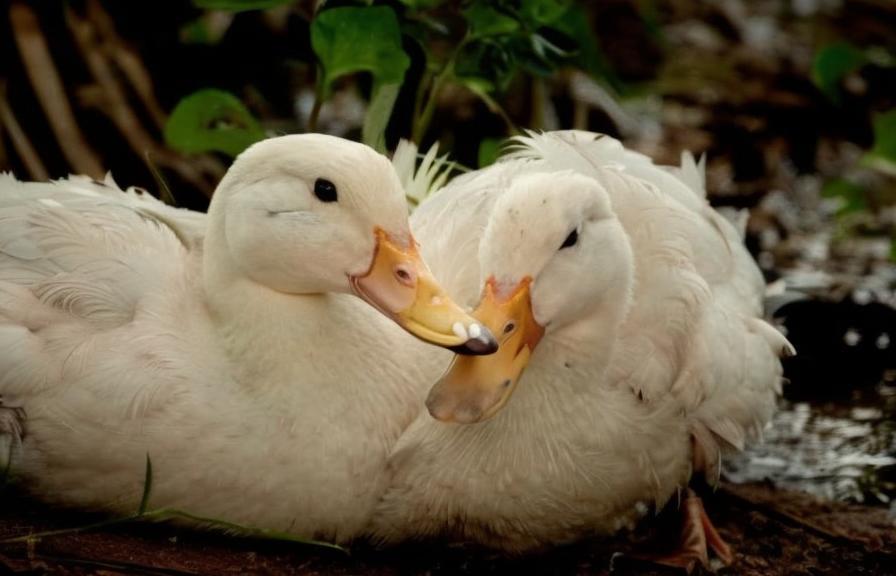Cross breeding ducks is the practice of mating ducks of different breeds to produce offspring with desirable traits from both parent breeds. This process involves carefully selecting the parent ducks based on their genetic traits, such as size, egg production, meat quality, and resistance to diseases. By combining the strengths of different breeds, cross breeding aims to create ducks that are well-suited for specific purposes, such as egg or meat production, or for thriving in particular environmental conditions. This practice has been used for centuries to improve the overall quality and performance of duck breeds, and it continues to be an important aspect of duck farming and conservation efforts.
Cross breeding ducks can lead to a diverse range of offspring with unique characteristics, making it a valuable tool for breeders and farmers looking to achieve specific goals. The process requires a deep understanding of genetics and careful selection of parent ducks to ensure the desired traits are passed on to the next generation. Overall, cross breeding ducks is a complex but rewarding practice that can lead to the development of new and improved duck breeds with a wide range of beneficial traits.
Key Takeaways
- Cross breeding ducks involves mating ducks of different breeds to produce offspring with desirable traits
- Benefits of cross breeding ducks include improved disease resistance, better egg production, and overall hardiness
- Common breeds used in cross breeding include Pekin, Khaki Campbell, and Indian Runner ducks
- Factors to consider when cross breeding ducks include genetic diversity, compatibility of breeds, and desired traits in offspring
- Challenges of cross breeding ducks include potential for genetic abnormalities and difficulty in maintaining breed purity
- Best practices for successful cross breeding include careful selection of parent stock, monitoring offspring for desired traits, and proper record keeping
- Examples of successful cross breeding programs include the development of the Golden Hybrid 300 and the Cherry Valley duck
Benefits of cross breeding ducks
Cross breeding ducks offers a wide range of benefits for both breeders and farmers. By combining the strengths of different breeds, cross breeding can lead to offspring with improved traits such as higher egg production, better meat quality, increased disease resistance, and adaptability to different environmental conditions. This can ultimately result in more efficient and sustainable duck farming practices, as well as higher quality products for consumers.
Furthermore, cross breeding can help to increase genetic diversity within duck populations, which is crucial for the long-term health and resilience of the species. By introducing new genetic material from different breeds, cross breeding can help to reduce the risk of inbreeding and genetic disorders, and improve overall population fitness. Additionally, cross breeding can lead to the development of new and unique duck breeds that are better suited for specific purposes or environments, which can open up new market opportunities for farmers and breeders.
Common breeds used in cross breeding
Several duck breeds are commonly used in cross breeding programs due to their desirable traits and genetic compatibility. For example, the Pekin duck is a popular choice for meat production due to its rapid growth rate and high meat yield. When crossed with other breeds such as the Khaki Campbell or the Indian Runner, which are known for their high egg production, the resulting offspring can exhibit a combination of these traits, making them well-suited for dual-purpose farming operations.
Other common breeds used in cross breeding include the Muscovy duck, which is valued for its lean and flavorful meat, and the Mallard duck, which is known for its wild and hardy characteristics. By crossing these breeds with others, breeders can create offspring with a diverse range of traits that meet specific farming or conservation goals. Additionally, some breeders may also cross domestic duck breeds with wild duck species to introduce new genetic material and improve overall population fitness.
Factors to consider when cross breeding ducks
When undertaking a cross breeding program for ducks, there are several important factors that breeders and farmers must consider to ensure the success of the program. Firstly, it is crucial to carefully select the parent ducks based on their genetic traits and compatibility to achieve the desired goals. This involves conducting thorough research on the characteristics of different duck breeds and understanding how these traits may interact when combined in offspring.
Additionally, breeders must consider the potential challenges and limitations of cross breeding, such as genetic disorders or reduced fertility in hybrid offspring. It is important to monitor the health and reproductive performance of the offspring closely to identify any potential issues and make informed decisions about future breeding selections. Furthermore, breeders must also consider the long-term implications of their cross breeding program on genetic diversity and population fitness within the duck species.
Challenges of cross breeding ducks
While cross breeding ducks offers many benefits, it also presents several challenges that breeders and farmers must navigate. One common challenge is the potential for reduced fertility or reproductive issues in hybrid offspring, which can impact the success of the breeding program. Additionally, some hybrid offspring may exhibit unpredictable traits or behaviors that make them less suitable for specific farming purposes, requiring careful selection and management.
Another challenge is the potential for genetic disorders or health issues in hybrid offspring, which can arise from the combination of different genetic backgrounds. Breeders must be vigilant in monitoring the health and well-being of their hybrid ducks to identify and address any potential issues early on. Furthermore, maintaining accurate records and pedigrees of hybrid offspring is crucial for tracking their genetic background and making informed breeding decisions in the future.
Best practices for successful cross breeding

To ensure the success of a cross breeding program for ducks, there are several best practices that breeders and farmers should follow. Firstly, it is important to conduct thorough research on the genetic traits and characteristics of different duck breeds to identify suitable parent ducks for the program. This involves consulting with experts in duck genetics and breeding to gain a deeper understanding of how different traits may interact in hybrid offspring.
Additionally, breeders should carefully monitor the health and reproductive performance of hybrid offspring to identify any potential issues early on. This may involve working closely with veterinarians or other experts to ensure the well-being of the ducks and address any health concerns promptly. Furthermore, maintaining detailed records and pedigrees of hybrid offspring is essential for tracking their genetic background and making informed breeding decisions in the future.
Examples of successful cross breeding programs
There are numerous examples of successful cross breeding programs for ducks that have led to the development of new and improved breeds with desirable traits. For instance, the development of dual-purpose duck breeds that excel in both egg production and meat quality has been achieved through carefully planned cross breeding programs. By combining the strengths of different breeds such as the Pekin, Khaki Campbell, and Indian Runner, breeders have created hybrid ducks that are well-suited for diverse farming operations.
Furthermore, conservation efforts have also benefited from successful cross breeding programs aimed at improving genetic diversity within duck populations. By introducing new genetic material from different breeds or wild duck species, breeders have helped to strengthen the overall health and resilience of duck populations in various environments. These successful examples demonstrate the potential of cross breeding programs to create new opportunities for farmers and breeders while contributing to the long-term sustainability of duck species.
In conclusion, cross breeding ducks is a complex but rewarding practice that offers a wide range of benefits for breeders, farmers, and conservation efforts. By carefully selecting parent ducks based on their genetic traits and compatibility, breeders can create offspring with improved characteristics such as higher egg production, better meat quality, increased disease resistance, and adaptability to different environmental conditions. While there are challenges associated with cross breeding, following best practices and learning from successful examples can help breeders achieve their goals and contribute to the long-term health and resilience of duck populations.
If you’re interested in crossbreeding ducks, you may also want to consider optimizing your chicken coop for the best results. Check out this informative article on chicken coop nest boxes to ensure your coop is set up for success. Creating a comfortable and functional environment for your poultry can contribute to successful breeding and overall well-being.
FAQs
What is cross breeding ducks?
Cross breeding ducks is the process of mating ducks from different breeds to produce offspring with desired traits, such as improved disease resistance, better egg production, or specific physical characteristics.
What are the benefits of cross breeding ducks?
Cross breeding ducks can result in offspring with hybrid vigor, which can lead to improved growth rates, better disease resistance, and overall hardiness. It can also help to introduce new genetic traits into a duck population.
What are some popular duck breeds for cross breeding?
Popular duck breeds for cross breeding include the Pekin, Khaki Campbell, Indian Runner, and Muscovy. These breeds are often chosen for their desirable traits such as egg production, meat quality, or foraging abilities.
What should be considered when cross breeding ducks?
When cross breeding ducks, it is important to carefully select the parent stock based on the desired traits in the offspring. It is also important to consider the potential challenges of managing a mixed breed flock, such as variations in size and behavior.
Are there any challenges associated with cross breeding ducks?
One challenge of cross breeding ducks is that the resulting offspring may not consistently exhibit the desired traits, as genetic variation can lead to unpredictable outcomes. Additionally, managing a mixed breed flock may require extra attention to ensure the well-being of the ducks.
Meet Walter, the feathered-friend fanatic of Florida! Nestled in the sunshine state, Walter struts through life with his feathered companions, clucking his way to happiness. With a coop that’s fancier than a five-star hotel, he’s the Don Juan of the chicken world. When he’s not teaching his hens to do the cha-cha, you’ll find him in a heated debate with his prized rooster, Sir Clucks-a-Lot. Walter’s poultry passion is no yolk; he’s the sunny-side-up guy you never knew you needed in your flock of friends!







